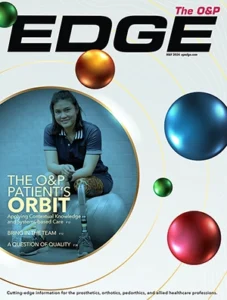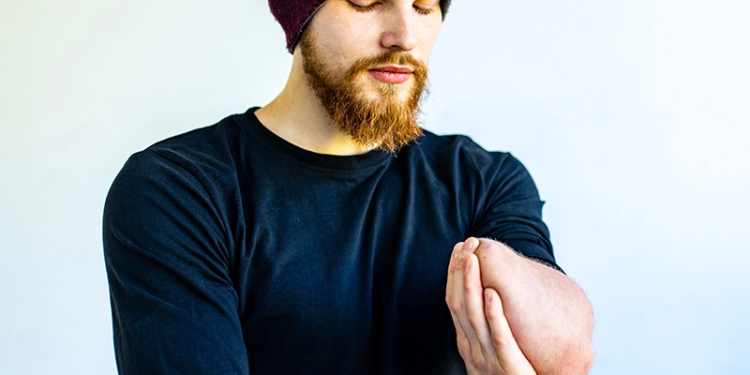Well, it has been a while but here is what I got about TLSO’s. The
majority consensus here is that bivalves are good or at least OK; two
people recommended Flexfaom anterior opening; and the orthopedist feedback
was: it’s not worth the expense.
Also, a parent wrote to my favorite special needs kids’ list:
Hi Everyone!
I’ve a question for those of you who’s child wears a TLSO or body
brace. Do they wear them at night? Kayda has a 2 piece brace that
looks like a horror chamber-it’s a hard plastic shell that goes part way
around her torso with a cloth panel in front that’s done up snugly, and
then there is a metal cross piece that goes over that which stretces
from just under her neck down to her hips. She wears it to prevent a
mild scoliosis from increasing and we’ve also found that it improves her
oxygen level as it keeps her lungs expanded or less compressed. She’s
always just worn it during the day as it looks so uncomfortable and I
wanted her to be relaxed at night. During this current illness though,
her ped said that her lungs are getting more compressed. He said it’s
from her scoliosis increasing-I don’t believe that as she had an xray
done in Sept that showed no change and that it was a very slight
scoliosis still. She has a Kyphosis as well which I think compresses
her lungs. It all of a sudden occured to me yesterday that maybe her
respiratory status would be better if she wore the brace 24 hrs a day.
It just looks so uncomfortable. What do any of you do? What do you
think? We have no physio so I have noone to ask here.
Vikki Stefans, pediatric physiatrist (rehab doc for kids) and working
Mom of Sarah T. and Michael C., aka [email protected]
Arkansas Children’s Hospital/ U of A for Medical Sciences, Little Rock
…and EVERY mom is a working mom! (OK, dads too…)
Dr. Stefans:
I read your E-mail dated 12/3/97 regarding TLSO in children with spina
bifida. I have worked for many years with spinal orthopeadists at the MN
Spine Center and Gillette Children’s Hospital. We fit many children who have
neuromuscular scoliosis with bivalve TLSOs. I think the key is in the design
and fit of the TLSO. The posterior section does not end at midline but wraps
around towards the front. The shape of the corrective pads is critical.
Sometimes we use dynamic pads. I would refer you to an article “Modern
Orthotics for Spine Deformities” by Robert B. Winter, MD and J. Martin
Carlson, CPO. I can send you a copy if you send me your address.
Katie Voss
Try the Spinal technology Flexfoam it has a soft interface and rigid external
frame. We do not usually try to get to aggressive w/ our correction with Spina
Bifida patients.
Marty Mandelbaum CPO
First chance I’ve had to check my e-mail in sevreal days as I’m a working
Orthotist and DAD, I’ll tell you the Dad part is more difficulte but often
much more fun and rewarding. Regarding your question— I’ve had these
compliance problems with patients, too. I’ve tried clamshells and one-piece
anterior opening body jackets to increase compliance . It does seem to work
better. Also, with my Orthopods, we’ve tracked the X-rays and haven’t had
huge problems in stabalizing the curve. The other thing we’ve done is to
utilize a Flexfoam style of TLSO made by Spinal Technology in Mass. This has
also been done on the difficult, hard-to-brace kids (neuromuscular scoliosis)
. Hope this helps . If I may be of further help, call me at 941-332-1197 or
e-mail me.
Josh Ryder, C.O.
You do not say wether the child also has scoliosis or what you are trying to
correct.
It is true that a bivalve tlso offers little correction for scoliosis. Because
of the A-P pressure ,it helps correct kyphosis and lordosis more than
scoliosis.
I use on my spina bifida patients the anterior opening flexfoam tlso from
Spinal Technologies 1800-253-7868.
I hope this helps.
Bill Fredenburg
We have used bivalves for years on Spina Bifida as well as CP patients and
have had very good results. If the orthosis is well made and is applied
properly, there should be minimal differences in effectiveness.
Don Christiano, BOCO
Rochester Orthopedic Labs
I suggest to prescript two-piece TLSO for your captioned patient and
reasons you have illiterate below. With reference to your concern
about the effectiveness and rigidity of the two-piece TLSO, I thought
it really depends on the design of the TLSO. For increasing rigidity,
the contact surfaces of the overlapping areas of the TLSO (usually at
the lateral mid-line about 2-3 inches wide), should be firmly adhered
with Velcro strap (one side for hook and the other side for loop) and
further secured by 6 non-stretchable straps (eg. Dacro strap) in cross
arrangement (i.e. X) between the anterior and posterior valves.
Up to the moment, I thought there is no scientific comparative
research study about the effectiveness of one-piece and two-piece
TLSOs. Thus, we cannot draw conclusion from general sense
Regards
M.S. Wong
Hong Kong
E-mail: [email protected]




